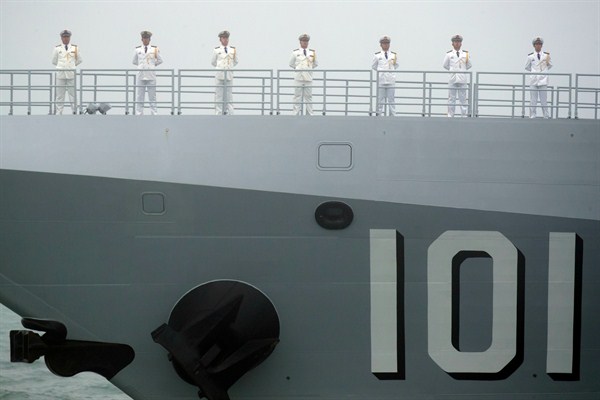In late March, China held an international fleet review to mark the Chinese navy’s 70th anniversary. In addition to the large Chinese contingent, 13 countries sent warships to the port city of Qingdao, on the coast of the Yellow Sea, while some 60 countries sent delegations to participate in the commemorations. The fleet review provided an opportunity to showcase the various advances in the Chinese navy and served as another public display of China’s growing military might. At the same time, though, it also exposed some of the Chinese navy’s enduring shortcomings.
The fleet review, which involved 32 Chinese naval vessels, was just the latest military display under President Xi Jinping, under whom large military parades have become a more regular occurrence. Russia, India, Japan and Australia were among the foreign participants, which also included China’s smaller neighbors Singapore, the Philippines and Vietnam. Most notably absent was the United States, which declined China’s invitation.
It was just over a year ago that China held its last major naval review, in the South China Sea. Xi, who stood on the deck of a Chinese destroyer, personally reviewed some 50 Chinese naval vessels. That two major naval reviews, one national and the other international, have been held in such a short time suggests that Beijing places enough value on these spectacles of military might to justify their financial cost and the disruption to readiness that they invariably impose.

